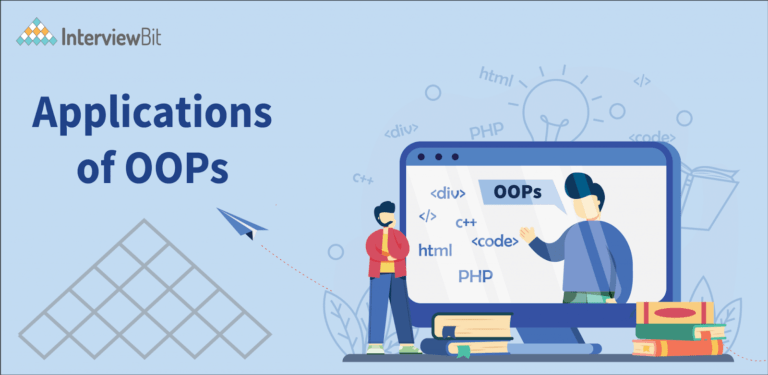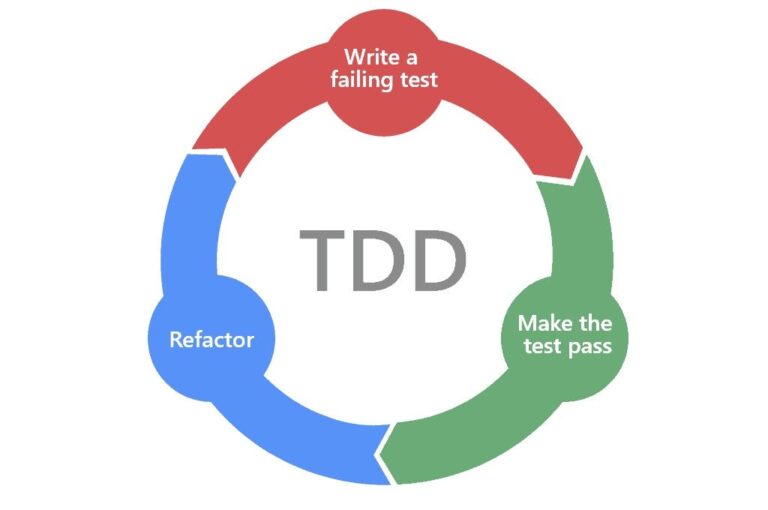Object-oriented programming (OOP) is a paradigm that revolutionized software development, offering a structured approach to building robust and adaptable applications. At the core of OOP lie several key principles, among which polymorphism and abstraction are fundamental for creating flexible, maintainable, and scalable software solutions. In this comprehensive guide, we embark on a journey to explore these concepts, unraveling their intricacies and uncovering their practical significance in real-world software development scenarios.
Polymorphism and abstraction are concepts in software development that allow objects to have multiple behaviors based on context or messages. Polymorphism allows developers to write code that can operate on different types, while abstraction simplifies complex systems by focusing on essential characteristics. These concepts enable developers to design elegant and efficient software solutions, reducing dependencies and fostering modularity. This guide explores practical examples and best practices.
This tutorial is a thorough resource to help you understand polymorphism and abstraction, regardless of your level of experience with programming. It is ideal for experienced developers who want to get a deeper understanding of OOP principles or new programmers who want to learn the basics. Our goal is to provide you with the information and understanding required to improve your software development abilities and create reliable, scalable, and maintainable systems in any programming language by dissecting these fundamental ideas and investigating their real-world implementations. Come along on this fascinating exploration of the ever-changing field of object-oriented programming.
Understanding Polymorphism
Originating from the Greek words for “many forms,” polymorphism enables objects belonging to distinct classes to be handled as though they were members of the same super-class. This idea makes programming more flexible by allowing one to design generic code that may be applied to objects with various characteristics. Java allows for polymorphism through the use of overloading and overriding methods, which facilitates method dispatch and dynamic binding.
Types of Polymorphism
Polymorphism is a fundamental idea in the intriguing field of computer languages, allowing programmers to write adaptive and flexible code. Understanding the two main types of polymorphism—compile-time and runtime—is crucial to fully appreciating its capabilities.
Compile-time Polymorphism:
- Function Overloading: One of the best examples of compile-time polymorphism is function overloading, which enables programmers to write many functions with the same name but distinct argument lists. Different operations are carried out by each overloaded function according to the supplied parameters. This useful feature offers a clear and succinct interface for linked tasks, which improves code readability and reusability.
Function overloading allows developers to use a single function name for multiple tasks, promoting code elegance and simplicity by providing a range of function definitions with varying parameter types.
Examples of Overloading Functions: Let’s Take a Look at a Geometric Utility Class. Its “area” function determines the area of different forms. The class can include several “area” functions, each specialized to a different shape, such as a triangle, square, or circle, thanks to function overloading.
The advantages of function overloading include reduced duplication and streamlined code maintenance. It makes codebases more succinct and well-organized by doing away with the requirement for distinct function names for somewhat different activities.
- Operator Overloading: Another example of compile-time polymorphism is operator overloading, which enables programmers to modify the behavior of common operators (such as +, -, *, and /) for user-defined classes or data types. Allowing common operators to be used on bespoke objects, enables developers to write code that is both expressive and easy to understand.
The purpose of operator overloading is to enable the use of operators in non-traditional settings, which improves the readability and naturalness of code. Developers may leverage the power of recognizable operators to accomplish complicated tasks by designating unique operations for bespoke objects.
An example of operator overloading would be the overloaded “+” operator in a matrix class. This would make matrix manipulation simple and beautiful for users by enabling them to add two matrices with just the ordinary “+” sign.
Benefits of Operator Overloading: Operator overloading improves language expressiveness and makes code easier to read. Utilizing the well-known syntax of operators lowers the learning curve and makes code comprehension easier for developers.
Runtime Polymorphism
- Virtual Operations Virtual functions, a potent technique that lets objects of derived classes change the behavior of base class functions, are used to establish runtime polymorphism. Because of its dynamic nature, developers may create intricate systems with interdependent parts, which improves the flexibility and maintainability of the code.
Virtual functions are functions declared in the base class and redefined in derived classes, facilitating late binding and enabling runtime polymorphism. They allow objects of different derived classes to be treated as base class objects, providing a unified interface. Examples include banking applications with base classes like Account and derived classes like SavingsAccount and CheckingAccount.
- Classes and Interfaces That Are Abstract Runtime polymorphism relies heavily on abstract classes and interfaces, which provide a sophisticated means of defining a contract for derived classes. An interface defines a set of methods that must be implemented by its derived classes, whereas an abstract class acts as a template for other classes and cannot be created.
Abstract classes and interfaces are essential components in software development, providing a common base for related classes and defining generic behavior for multiple derived classes. They are used to reduce code duplication and promote code consistency, while interfaces establish contracts for unrelated classes.
Here’s an example of polymorphism using Java:
public class Animal {
public void makeSound() {
System.out.println("The animal makes a sound");
}
}
public class Dog extends Animal {
public void makeSound() {
System.out.println("The dog barks");
}
}
public class Cat extends Animal {
public void makeSound() {
System.out.println("The cat meows");
}
}
public class Main {
public static void main(String[] args) {
Animal animal1 = new Animal();
Animal animal2 = new Dog();
Animal animal3 = new Cat();
animal1.makeSound();
animal2.makeSound();
animal3.makeSound();
}
}
A generic animal is represented in this example by the Animal class, which has a makeSound() function that outputs a message indicating that the animal produces a sound.
The Animal class is then extended into two subclasses, Dog and Cat, which override the makeSound() function to output messages indicating that the dog barks and the cat meows, respectively.
Lastly, we create three objects—one of type Dog, one of type Cat, and one of type Animal—and use the makeSound() function on each of them in the Main class. The makeSound() function is overridden by the Dog and Cat classes, so when it is called on them, they will print out their customized messages.
This exemplifies polymorphism in action as we may apply the identical makeSound() function to many animal species and obtain distinct outcomes according to the species.
Pros and Cons of Using Polymorphism
Programming language polymorphism, sometimes known as the chameleon of languages, has several benefits that greatly improve software development. Like every strong instrument, though, it has its limitations and certain drawbacks. Let’s explore the amazing advantages of polymorphism and the things developers need to know as we go deeper into the topic.
Advantages of Polymorphism in Software Development
In software development, polymorphism is revolutionary as it offers several benefits that improve code effectiveness and quality.
- Modularity and Scalability: Because polymorphism isolates general functionality from particular implementations, it promotes modular design. Because of its modularity, the code can be scaled more easily, making it easier to design complex applications.
- Flexibility and Extensibility: Polymorphism makes it possible for developers to easily add new derived classes without changing current code by giving related classes a uniform interface. Its flexibility allows the software to change and expand over time.
- Dynamic Behavior: Runtime polymorphism allows for dynamic behavior, where the right function is chosen at runtime based on the actual object type. This is accomplished by virtual functions and interfaces. The responsiveness and interactivity of the program are improved by this dynamic dispatching.
- Enhanced Maintainability: Codebases that are clearer and more organized due to the usage of polymorphism are easier for developers to comprehend, alter, and update over time.
Limitations and Potential Challenges of Polymorphism
Although polymorphism has many advantages, developers should be mindful of its possible drawbacks and difficulties:
- Learning Curve: Polymorphism can be difficult at first to understand and use appropriately, especially for newcomers. A strong understanding of object-oriented programming is necessary to comprehend the nuances of virtual functions, inheritance, and interfaces.
- Performance Overhead: Runtime polymorphism may result in a small performance overhead because of dynamic dispatching, particularly when used with virtual functions. This extra expense might be problematic in situations where performance is crucial.
- Design Complexity: Overuse of abstraction or improper use of polymorphism can result in code and design that are overly complicated. Code can become challenging to read and maintain if virtual functions or inheritance structures are used excessively.
- Trade-offs in Design Choices: The trade-offs of polymorphism and alternative programming paradigms must be carefully considered by developers. Polymorphism is not always necessary, and the best strategy to use will rely on the particular needs of the application.
Understanding Abstraction
In the field of Object-Oriented Programming (OOP), abstraction is essential because it makes it easier to create software systems that are both elegant and manageable. Fundamentally, abstraction is the process of disassembling large, complicated systems into smaller, easier-to-manage parts. In the context of object-oriented programming (OOP), abstraction is accomplished by creating classes and objects that hide implementation details and encapsulate high-level notions, promoting code design that is clear and succinct.
Types of Abstraction: Data and Procedural
- Data Abstraction in Computer Science: Examining Data Abstraction in detail reveals that it is one of the fundamental ideas of object-oriented programming (OOP). It emphasizes what must be done rather than how. This makes it easier for programmers to work with complicated systems at manageable levels, even if they are not fully aware of the underlying logic.
Data Abstraction in database systems allows interaction with objects without worrying about underlying structures or storage mechanisms. In object-oriented programming languages like Java, encapsulation, inheritance, and polymorphism form Data Abstraction, where objects provide data and methods to manipulate it within the same structure.
- Procedural Abstraction in Computer Science: By shifting your focus to procedural abstraction, you’ll discover an alternative method for controlling program complexity. The implementation of the process’s specifics is the subject of procedural abstraction. Here, the objective is to slice the complicated platter of computing duties into bite-sized chunks for easier digestion. This encourages code efficiency and facilitates code reuse and maintenance.
Java Abstraction Example:
// concept of Abstraction
abstract class Shape {
String color;
// these are abstract methods
abstract double area();
public abstract String toString();
// abstract class can have the constructor
public Shape(String color)
{
System.out.println("Shape constructor called");
this.color = color;
}
// this is a concrete method
public String getColor() { return color; }
}
class Circle extends Shape {
double radius;
public Circle(String color, double radius)
{
// calling Shape constructor
super(color);
System.out.println("Circle constructor called");
this.radius = radius;
}
@Override
double area()
{
return Math.PI * Math.pow(radius, 2);
}
@Override
public String toString()
{
return "Circle color is " + super.getColor()
+ "and area is : " + area();
}
}
class Rectangle extends Shape {
double length;
double width;
public Rectangle(String color, double length,double width)
{
// calling Shape constructor
super(color);
System.out.println("Rectangle constructor called");
this.length = length;
this.width = width;
}
@Override
double area()
{
return length * width;
}
@Override
public String toString()
{
return "Rectangle color is " + super.getColor()
+ "and area is : " + area();
}
}
public class Test {
public static void main(String[] args)
{
Shape s1 = new Circle("Red", 2.2);
Shape s2 = new Rectangle("Yellow", 2, 4);
System.out.println(s1.toString());
System.out.println(s2.toString());
}
}
Benefit of using Abstract classes and Abstract methods
- Enforce Structure: Concrete subclasses are required to abide by a certain structure or contract that abstract classes impose. This can make the code more dependable and manageable by ensuring that subclasses implement particular methods and attributes.
- Abstraction: It is possible to define a class’s blueprint or template without giving a full implementation by using abstract classes and methods. This enables you to write code that represents an item or idea at a high level in an abstract manner.
- Forcing Implementation: Without any implementation, abstract methods are specified in the abstract class. Subclasses must supply these methods’ specific implementations. This guarantees that every subclass implements a particular behavior.
- Code Organization: By uniting similar classes and methods under a single abstraction, abstract classes can aid in the organization of your code. Offering a clear structure can enhance the readability and maintainability of the code.
- Extensibility: By building new subclasses that inherit the abstract methods, abstract classes may be expanded. This lets you extend the capabilities of your program by adding new subclasses without changing the original code.
Disadvantages of Abstraction In OOPs
- Can complicate code understanding: Since abstraction in object-oriented programming hides underlying details and only displays what is necessary, it can be confusing to understand code.
- Slows down program execution: The overhead of invoking methods through abstract classes or interfaces might make the application run slower.
- Difficult for new programmers: It may be difficult for inexperienced programmers to comprehend since it necessitates a solid grasp of the underlying implementation.
- Increases code debugging difficulty: Additionally, because abstract methods hide the real code execution, debugging may become more difficult.
- Limits flexibility in code use –Finally, because it exposes only specified methods and attributes, it may limit how flexiblely the code may be used.
Practical Applications of Abstraction and Polymorphism
Abstraction and polymorphism are essential components of real-world software development because they help solve complicated issues and create scalable, maintainable systems. Let’s look at a few real-world uses for abstraction and polymorphism in a variety of fields:
Case Study: Building a Banking System
Assume you are responsible for developing a banking system that tracks clients, transactions, and accounts. The design and implementation of such a system can be made much simpler by abstraction and polymorphism.
Abstraction in Action:
- By specifying common characteristics and behaviors, abstract classes may represent generic financial entities like Account and Transaction.
- Standardized procedures like as deposit(), withdraw(), and transfer() can be defined using interfaces to guarantee uniform behavior across various account kinds.
- The abstract Account class is extended with concrete classes, such SavingsAccount and CheckingAccount, which offer customized implementations while maintaining the same interface.
Polymorphism in Practice:
- Regardless of the kind of account, you can conduct transactions consistently with polymorphism.
- For example, the processTransaction() function takes any Account object as input and uses polymorphism to call the proper implementation of the withdraw() or transfer() method according to the account’s runtime type.
- This adaptability improves the maintainability and extensibility of the banking system by enabling it to handle new account types or transaction circumstances without changing the current code.
Abstraction and polymorphism are crucial concepts in software development, enabling developers to create flexible, maintainable, and scalable solutions that meet user needs, driving innovation in software engineering, and addressing evolving user needs.
To sum up, abstraction and polymorphism are fundamental concepts in the field of object-oriented programming (OOP), giving programmers the ability to create software solutions that are robust and adaptable.
By enabling developers to break down complicated systems into smaller, more manageable parts, abstraction promotes code reuse, maintainability, and clarity. Abstraction simplifies complex implementation details and exposes just necessary interfaces, which improves code readability, increases security and increases productivity. Developers utilize abstraction to build understandable models that protect users from complexity and promote productive teamwork and development.
Polymorphism and abstraction are key principles in modern software engineering, allowing developers to create flexible, uniform software systems that can adapt to changing user needs. These concepts enable developers to write concise, expressive, and resilient code, enabling seamless integration of new features and functionalities.








